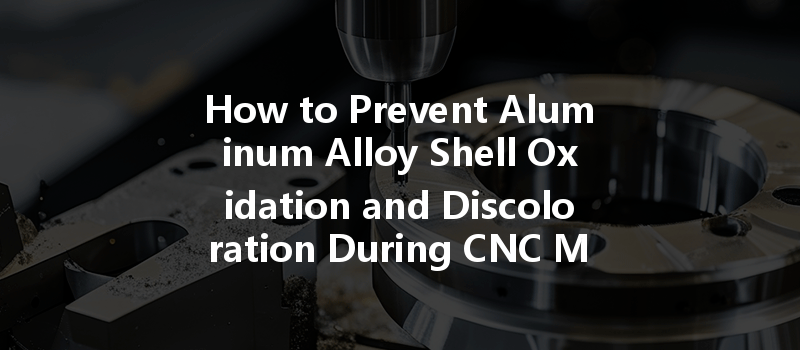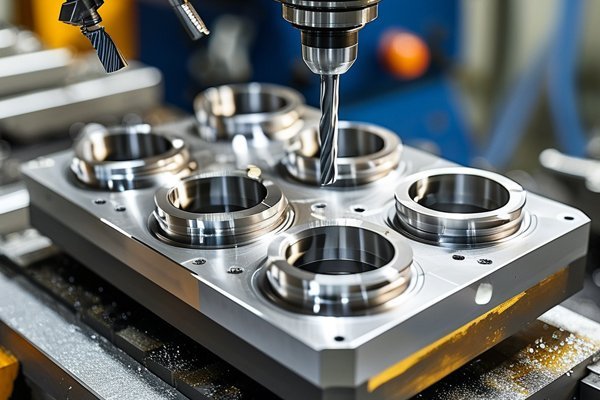Opening
Did you know that aluminum alloys, which are famous for their lightweight and strength, can experience significant aesthetic and functional degradation due to oxidation? Studies indicate that nearly 30% of professionals in the CNC machining industry encounter issues related to aluminum oxidation, which can lead to costly project delays and cancellations. These statistics raise an important question: how can manufacturers effectively prevent aluminum alloy shell oxidation and discoloration during the CNC machining process?
In this blog post, we will delve into this pressing issue, explore the causes of aluminum oxidation, and discuss various preventive measures you can implement to maintain the quality and integrity of your aluminum machined parts.
—
Understanding Aluminum Oxidation and Discoloration
Before we can effectively combat aluminum oxidation, it is essential to understand what occurs during this process.
Oxidation Process: When aluminum is exposed to oxygen in the environment, it forms aluminum oxide (Al2O3) on its surface. While this oxide layer initially offers a protective barrier, environmental factors, contaminants, and machining practices can compromise this layer, leading to increased corrosion and discoloration.
Causes of Discoloration:
Preventive Measures Against Oxidation
Choosing the right aluminum alloy can significantly impact oxidation resistance. Alloys like 6061 and 7075 are commonly used due to their superior properties. Prior to machining, ensure that the raw aluminum surface is free from contaminants such as oils or dirt to minimize oxidation risks.
Solution: Implement a pre-cleaning process using mild solvents to clean the aluminum surface before machining.
Optimizing machining parameters can play a critical role in reducing oxidation:
Solution: Conduct regular training sessions for operators to fine-tune machining parameters and ensure efficiency.
Utilizing the right coolant can provide a protective barrier against oxidation. Water-based coolants can cause corrosion, while oil-based lubricants or synthetic coolants can provide better protection.
Solution: Switch to synthetic or semi-synthetic coolants designed for aluminum working, which help dissipate heat while forming a protective film on the surface.

Controlling the machining environment is vital for preventing aluminum oxidation:
Solution: Invest in environmental control systems for machining areas.
Post-machining surface treatments can improve the resistance against oxidation:
Solution: Establish relationships with local surface treatment providers to ensure availability and quality of anodizing services.
Quality Control Measures
Regular quality checks must be built into the production process.
Conduct systematic inspections of machined parts for signs of oxidation or discoloration. Visual inspections paired with physical tests (like hardness tests) can ensure your parts meet quality standards.
Solution: Implement a rigorous quality assurance program that includes both in-process and post-process inspections.
Create documentation procedures to track oxidation cases. Analyze past occurrences and gather feedback from machinists to continuously refine processes.
Solution: Use a digital system to manage records and drive improvements based on historical data.
Innovation and Future Trends
With advancements in CNC machining technology, new innovations are being developed to minimize oxidation risks. The use of laser engraving and micro-texturing methods can replace traditional machining techniques that inherently contribute to oxidation.
Incorporating smart manufacturing systems that monitor machine conditions in real-time can help in adjusting machining parameters dynamically, thus preventing excessive heat accumulation that could lead to oxidation.
Preventing aluminum alloy shell oxidation and discoloration during CNC machining is not merely a concern for aesthetics; it is crucial for maintaining the integrity and performance of the final product. By adopting a holistic approach that includes proper material selection, optimized machining parameters, effective cooling methods, controlled environments, and comprehensive surface treatment options, manufacturers can safeguard against oxidation.
This blog serves as a crucial resource for businesses looking to enhance their machining processes and product quality while minimizing reject rates due to oxidation. As you seek to refine your operations, remember that implementing these strategies not only adds value to your products but also fosters long-term relationships with clients who demand high-quality, reliable parts.






